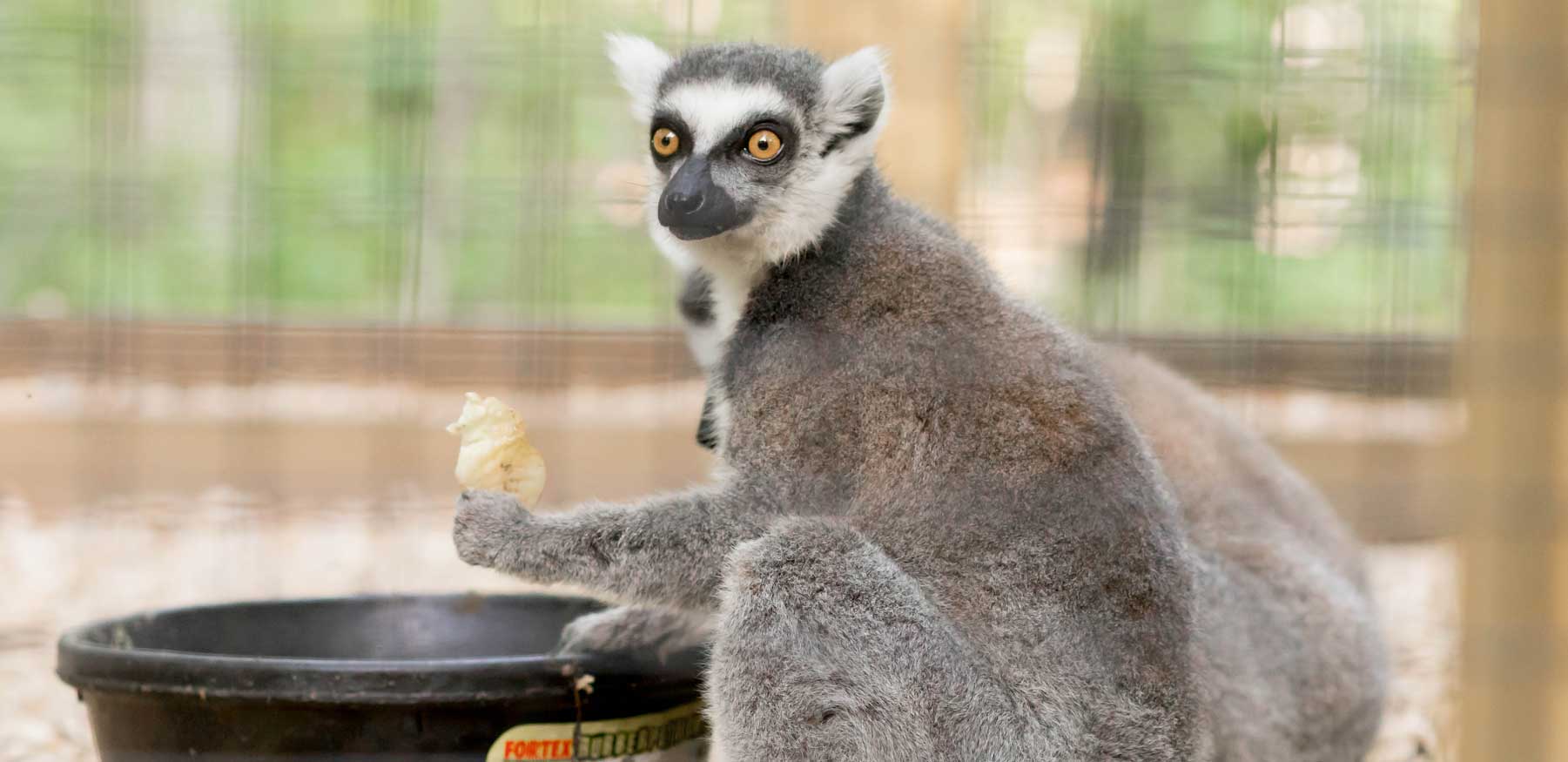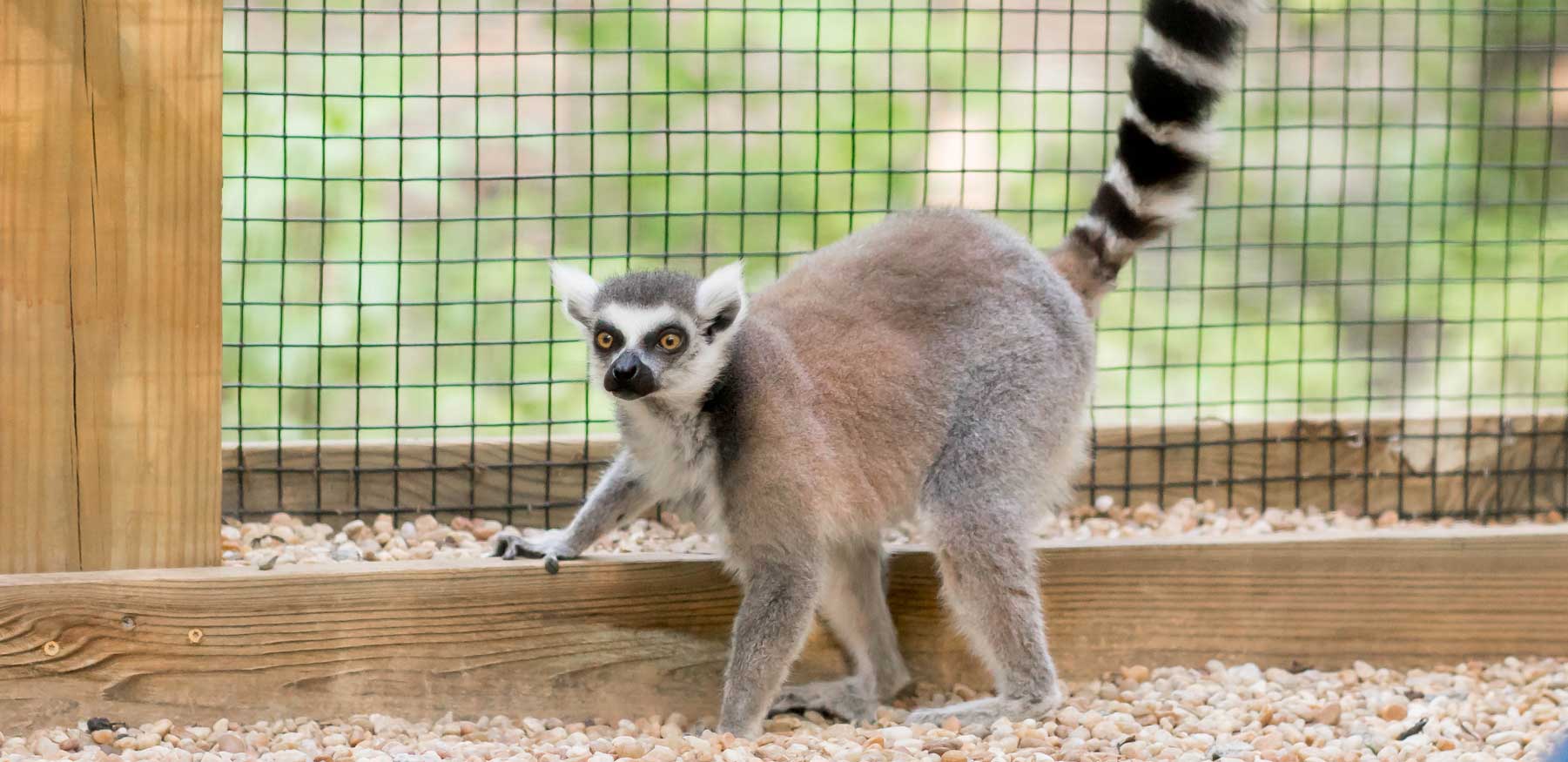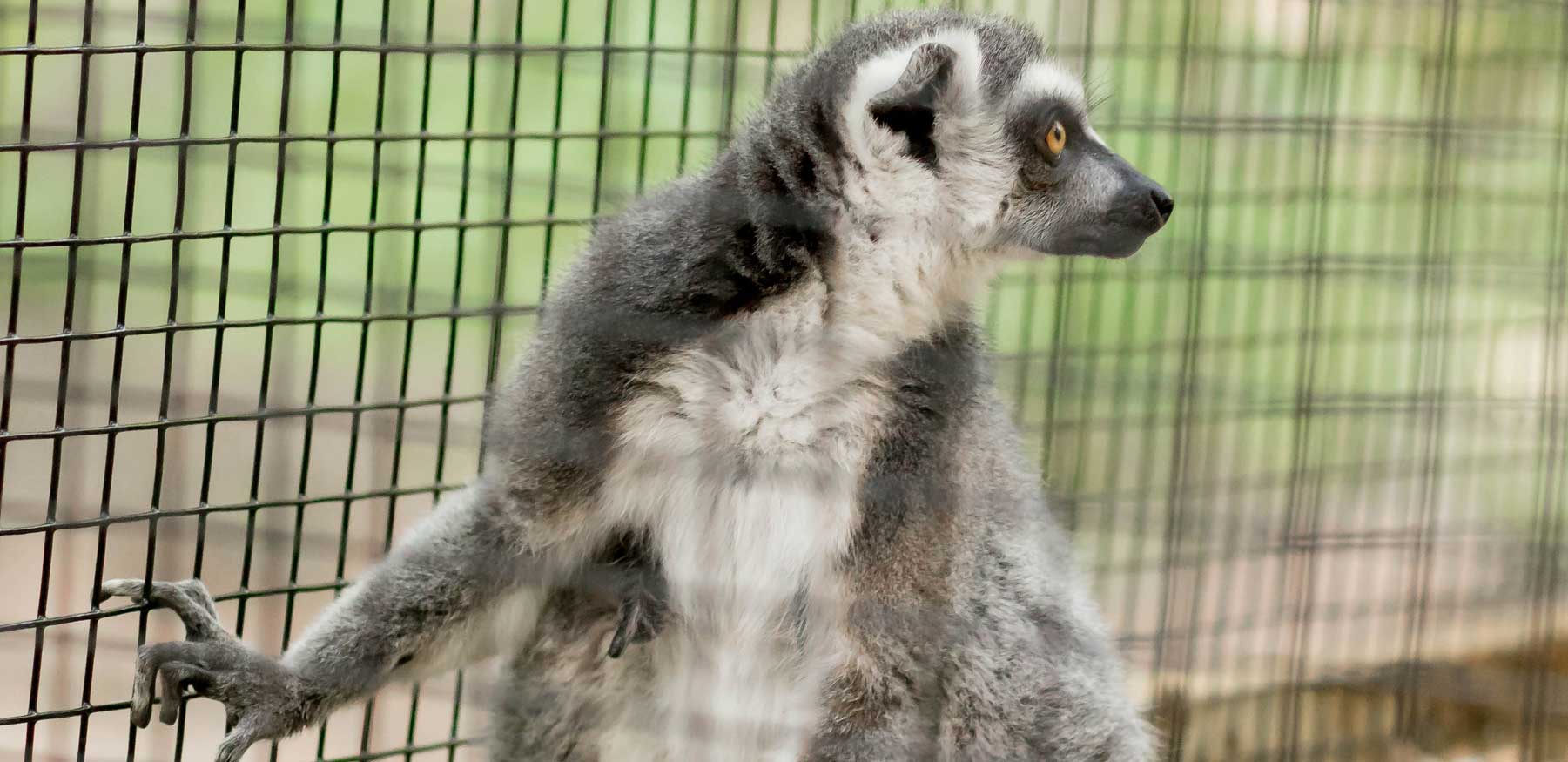
RING-TAILED LEMUR
A symbol for Madagascar and its endangered species because of their notoriety, made famous by the fun-loving character, King Julien.
PROFILE
Julianne is the youngest of the troupe, but the friendliest. She was born to Aphra and Wedge, but because neither of them were the dominants of their genders, she was raised separately from the troupe. She loves the keepers and usually tries to jump into the food bucket before her troupe members to get the best food. Aphra is the largest female of the troupe. She is the most shy, but if you have a grape or banana, she will come right up to you. She is usually hanging out with Wedge. Q’ira is the dominant female of the troupe, even though she is one of the smallest of the troupe. She is usually seen with Lando and can be identified by her scrunched-up nose. Lando is the dominant male of the troupe. He is about the same size as Aphra, so the keepers are able to tell him apart because his tail ends in black. Wedge is the lowest on the troupe totem pole since he is the non-dominant male. He is also one of the smaller lemurs in the troupe. He is often seen hanging around Aphra. Poke is Q’ira’s son born in 2021. He is the most energetic and independent of the ring-tail babies of that year. Thunder and Storm are Aphra’s twin daughters born in 2021. They love playing with Poke.
OVERVIEW
CONSERVATION STATUS
Endangered
AVERAGE SIZE
Compared to a 6′ Man
AVERAGE WEIGHT
4.9 lbs
AVERAGE LIFESPAN
16 – 19 Years
DIET
Herbivore
REGIONS
Madagascar
Ring-tailed lemurs come from Madagascar, an island off the coast of Africa. In fact, all of the almost 200 lemur species are from Madagascar. The ring-tailed lemur is the most terrestrial, spending up to 33% of its time on the rainforest floor. The rest of the time they can be found in the mid or upper level canopies of the forest. While found commonly in most every zoo and sanctuary around the world, the destruction of natural habitat, along with hunting and illegal trade, find the ring-tailed lemur on the endangered species list.
APPEARANCE
The ring-tailed lemur’s trademark bushy tail is longer than their body. It’s alternating rings of white and black typically number 12 to 14 of each. While part of the primate order, the lemur’s tail is not prehensile…it cannot be used to hang from, or hold, things. Lemurs use their tails for balance, communication, and group cohesion. Their fur is grey with white throats and chests, sometimes with areas of light brown. The darker coat areas are so dense, they can clog electric clippers. Other than very slight variations of facial hairs, there are no visual differences between males and females. Their smooth, leathery skin is dark grey to black. Long, padded fingers are semi-dexterous, as the thumb is not opposable. On the other hand, their feet are more specialized, in that their big toe is opposable. Unlike other lemurs, the ring-tailed’s heel is not covered by fur. Thanks to a reflective layer behind their retinas, these lemurs have excellent night vision.



CHARACTERISTICS
Ring-tailed lemurs will usually start their days sunbathing: bellies up, soaking in the warmth. Once warmed, they forage for fruit, flowers, herbs, sap, and leaves, especially those of the tamarind tree. A dominant female leads a troupe, averaging 17 to 20 members. Highly vocal with a wide range of sounds, most of which act as alarms when predators are near, they also communicate via scent.
Ring-tailed lemurs, both male and female, have multiple scent glands. They will mark territory, sometimes via a handstand. During mating season (mid-Spring, usually the month of May), males will use the glands on their arms to spread the secretions across their tails. Then they’ll wave their tail at other males, in what is referred to as a “stink fight,” until the others back down and run away.
These dominant males will then breed with one of the dominant females in the group. After a gestation period of about 135 days, the mothers will birth one tiny “pup” (it is rare for more than one to be born in the wild.) After the first few initial weeks, the close-knit troupe will share in the raising of the pup, called “alloparenting.” Young ring-tailed lemurs cling to the bellies of their mothers as well as their “alloparents.” As they get stronger, after about two weeks, they will move to their mother’s backs. By six months of age, most become independent.
When not parenting, foraging, or sunbathing, ring-tailed lemurs spend a lot of time grooming both themselves and each other. They are meticulously clean animals. They will use their teeth like a comb, as well as a special claw on their rear foot that is longer than the others, making it the perfect tool to work through their thick fur. In the evenings, the troupe will huddle into a “lemur ball” to stay warm.


